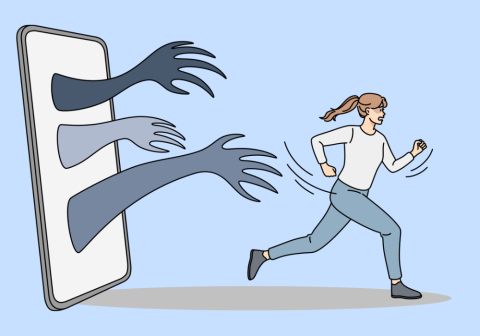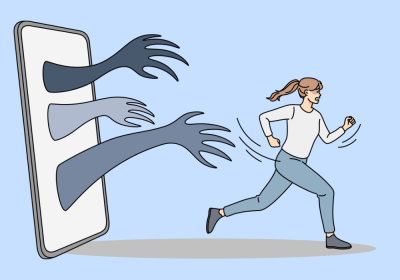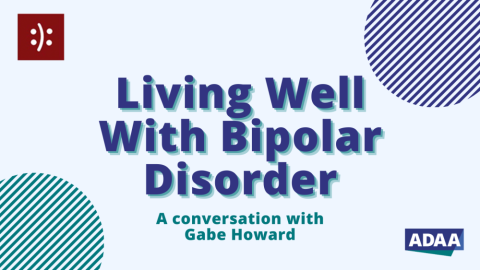
Key findings in the National Center for Health Statistics (NCHS) Data Brief issued on Feb. 13 show that more than 8% of adults older than 20 years old reported having depression during a given two-week period. Women (10.4%) were almost twice as likely as were men (5.5%) to have had depression. Every day, women face many different stressors in both their personal and professional lives. Feeling sad, lonely and scared are normal reactions, however, for individuals who are diagnosed with depression, these feelings tend to be more severe as they persist. It is proven that, depression can affect women differently than men. Women are 2-3 times more likely than men to develop depression.1
- Signs and Symptoms of Depression
- Types of Depression
- Treatment
- ADAA Resources
- Other Resources
- Trending Articles
Signs and Symptoms of Depression
- Feelings of emptiness and hopelessness
- Irritability, anxiousness, and guilt
- Feelings of exhaustion, severe tiredness
- Feelings of tension
- Loss of interest and energy
- Inability to concentrate or remember details
- Suicidal thoughts or attempts of suicide
- Changes in appetite – eating too much or too little
- Physical symptoms – aches and pains, cramps, headaches, digestive issues, breast tenderness, bloating
- Mood swings
- Panic attacks
- Sleep disturbances; sleeping too much or too little, insomnia
If you or someone you know express one or more of the following symptoms, please seek professional help.
Read more about the symptoms of depression in women at Healthline.com.
Types of Depression
Major Depressive Disorder is the most commonly diagnosed form of depression. Around 16.1 million adults aged 18 years or older in the U.S. had experienced at least one major depressive episode in the last year, which represented 6.7 percent of all American adults. Depression is the leading cause of disability in the United States among people ages 15-44. Watch ADAA's What is Major Depressive Disorder (MDD)?
Postpartum Depression, or PPD, is depression in women associated with pregnancy. 13% of women may experience PPD between a week and a month after delivery.
- Learn more about postpartum disorders:
Treatment
Treatment options and resources are usually the same for women as men, with the exception of women who are pregnant or may become pregnant. Depression can worsen, improve, or stay the same during pregnancy, and that may affect treatment. Learn about medication use during pregnancy here.
ADAA Resources
Blogs
- Heart Disease and Depression Often Go Hand in Hand: WomenHeart Can Help
- Adolescent Girls and Anxiety
- Women and Depression
- Be There for Women Veterans in Your Community
- Diverse Women in Clinical Trials: Making a Difference
Webinars
Videos
Personal Stories of Triumph: Depression
- Abigail's Story
- I’m a Comedian, and I’m Depressed
- How Depression Changed His Life
- "Just Perfect"
- My Cure
- Not Really a Rebel
Other Resources
- Depression - NIMH
- Depression During Pregnancy & Postpartum - Postpartum Society International
- Depression in Women- Mental Health America
- Depression in Women: 5 Things You Should Know - NIH
- Depression in Women - HelpGuide.org
- Depression in Women: Understanding the Gender Gap - Mayo Clinic
- Depression - womenshealth.gov
- Women and Depression - FDA.gov
Trending Articles
- Deepika Padukone Opens Up About Struggle with Depression and Why She's '#NotAshamed' of Mental Illness
- I Was Hospitalized For Depression Even Though My Life Looked Great From The Outside
- Caregiver Stress
- Mental Health Diagnoses More Common among PCOS Women, Offspring
- Risk, Predictors of Postpartum Psychosis in Women With Bipolar Disorder
- Federal Officials Urged to Increase Perinatal Depression Treatment in Minority Women
- We Need to Talk About Mental Health at Work
- 1 in 20 Younger Women Suffers Major Depression
- Test Used to Diagnose Depression May Not Work on Black People, Study Finds
- Women Twice as Likely as Men to Have Depression, Survey Finds
- More than 12 Million American Women Suffer from Depression - Double the Rate of Men, New CDC Figures Reveal
- Low Libido and Depression: What’s the Connection?
- The State of Research on PCOS and Mental Health















